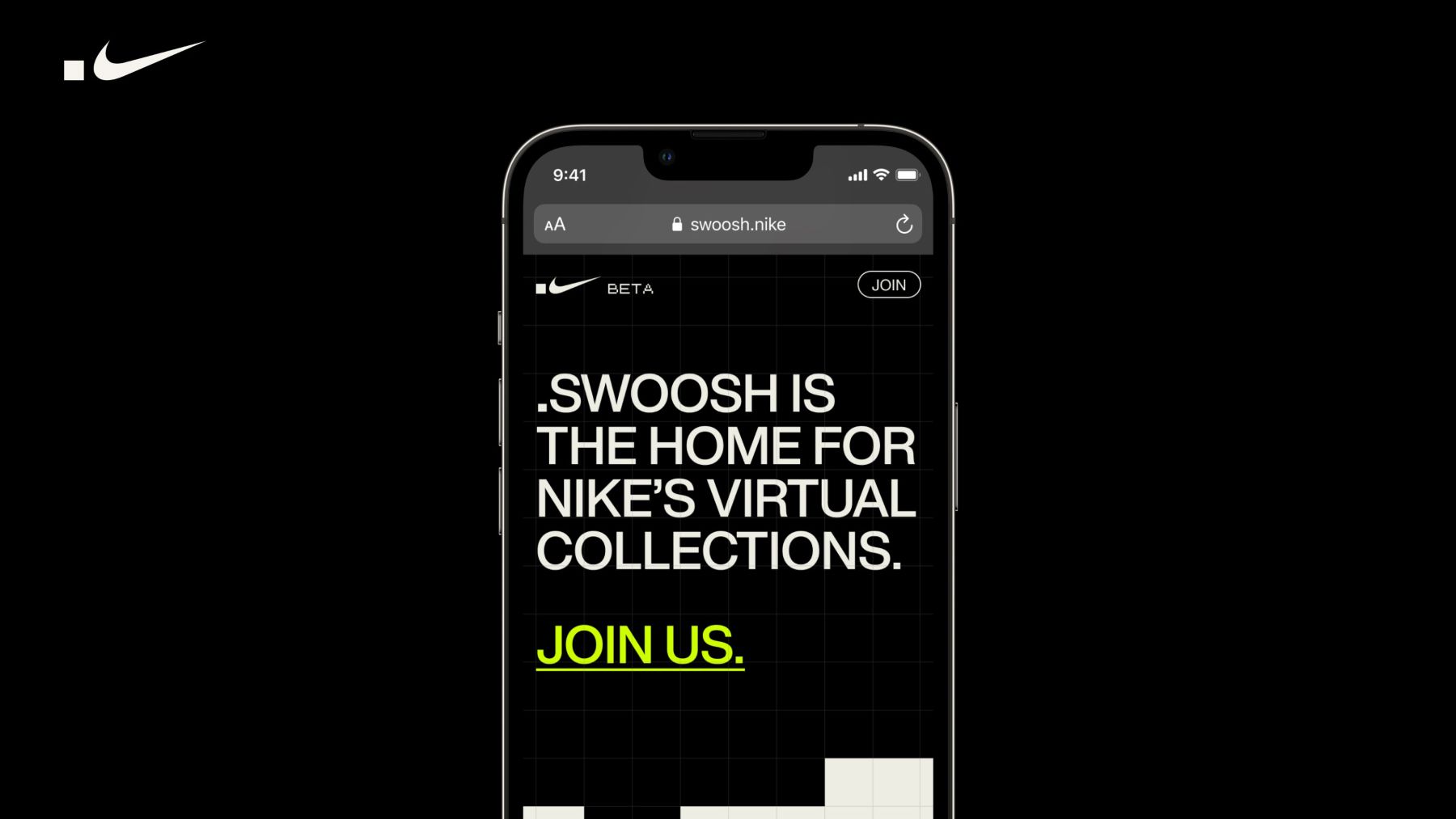
Nike was ahead of the curve among fashion and footwear brands making moves into crypto, securing a patent for blockchain-linked sneakers called CryptoKicks back in 2019. Last year, as NFT trading reached a frenzy, it made probably the biggest investment of its peers by acquiring RTFKT, a maker of NFTs and virtual fashion that has since released products bearing Nike’s name and logo.
But Nike still hadn’t come out with a big web3 project under its own label, even as competitors like Adidas and Puma introduced their own — until now, that is.
Today the company announced the launch of .Swoosh, a platform for Nike’s customers to learn about web3, collect virtual products like sneakers or jerseys and, eventually, help to co-create them — even potentially earning royalties on their sales. Don’t expect a big drop of Nike NFTs right away, however. There won’t be much activity on the page to start, though that will change in the coming days and weeks.
First, visitors with an access code given out to select Nike community members will be able to register on the site and claim a username. In December, Nike plans to begin educating members about web3, helping them set up digital wallets for instance — it’s working with third-party wallet provider BitGo — and encouraging them to get involved through prompts like community challenges on Instagram. In January, Nike will drop its first collection on .Swoosh and begin testing out different utilities for its virtual items, which it wants to be more than just collectables. Like other brands testing the waters of web3, it’s exploring them as a means to foster community and sell physical products.
“We see a [virtual] shoe that one day unlocks access to a pre-order of a physical shoe, or one day unlocks access to a token-gated chat with our designers where you can help shape certain decisions around what colourway we launch with, or another day where you could unlock the wearable version in your favourite game or in your favourite immersive experience,” said Ron Faris, a Nike vice president and general manager of Nike Virtual Studios, which is focused on metaverse and web3 ventures.
Nike’s .Swoosh is aimed at the “web3 curious” rather than those deeply enmeshed in the space, an audience RTFKT is already serving, Faris said. It’s unclear how big that population is at this stage though. Many shoppers have undoubtedly heard about blockchain and cryptocurrencies but lately it’s often in the context of crashing prices and collapsing companies. The complicated user experience involved in setting up a digital wallet and minting NFTs — meaning logging the digital assets on a blockchain — is a barrier to entry in itself. Faris compared web3 today to the internet before web browsers existed.
Still, he pointed out more people are spending time in virtual spaces, and Nike sees an opportunity to build an onramp for the uninitiated. To keep things simple to start, it will price its virtual products in dollars, not cryptocurrency — with most coming in under $50 — and will restrict them to its platform. Soon, however, Nike will allow users to connect their own crypto wallets and move their items to the usual NFT marketplaces.
Nike is also planning a six-city tour in December, selecting areas that typically aren’t the first to receive new technologies, according to Faris. Promoting a diverse and inclusive community are key priorities, which is why Nike’s community partners in diversity, equity and inclusion will be among the first receiving access codes to register on .Swoosh. Steadily it will invite in more members.
“Our Nike community is very large. It spans everywhere from South Bronx to North London,” Faris said. “In all those areas where it goes, you want to be able to create a level of access that levels the playing field.”
Nike chose to host the platform on its own .nike domain, which it means to use for all its web3 projects, in part for security. Because it will own all .nike links, it’s harder for scammers to lure users with fake links, a constant problem in web3 and a headache for platforms like Discord.
The company debated whether putting its virtual products on a blockchain was even necessary. The work it did with RTFKT convinced Nike it was because blockchain offers the transparency of a public ledger and the flexibility of the self-executing programmes in NFT code known as smart contracts, Faris said. For example, it plans to eventually host community challenges where members skilled in 3D tools can compete and the winner will be able to collect a royalty on sales of the virtual items they help create — an ability allowed by smart contracts, at least to a degree.
Though Nike also wants to involve members in simpler forms of co-creation, too, like helping Nike make decisions on colourways for new products.
The company was later than some of its rivals to debut its own big web3 project because it was still observing and learning, according to Faris. He compared it to taking up a new sport and said Nike wanted to take its time, acknowledging that web3 can be a volatile space, as the dramatic downturn in cryptocurrency values and NFT trading this year has shown. It will use .Swoosh to test and learn, an approach adopted by brands such as Gucci, too.
But Nike also sees .Swoosh as a way to further its strategy of serving the marketplace of the future, where shoppers value their online identities as much as their offline lives and digital and physical products exist side by side. The sneaker giant believes there’s a genuine business opportunity, an outlook it shares with RTFKT.
“We’re building for a long-term future,” Faris said. “We’re here to stay in this space.”



